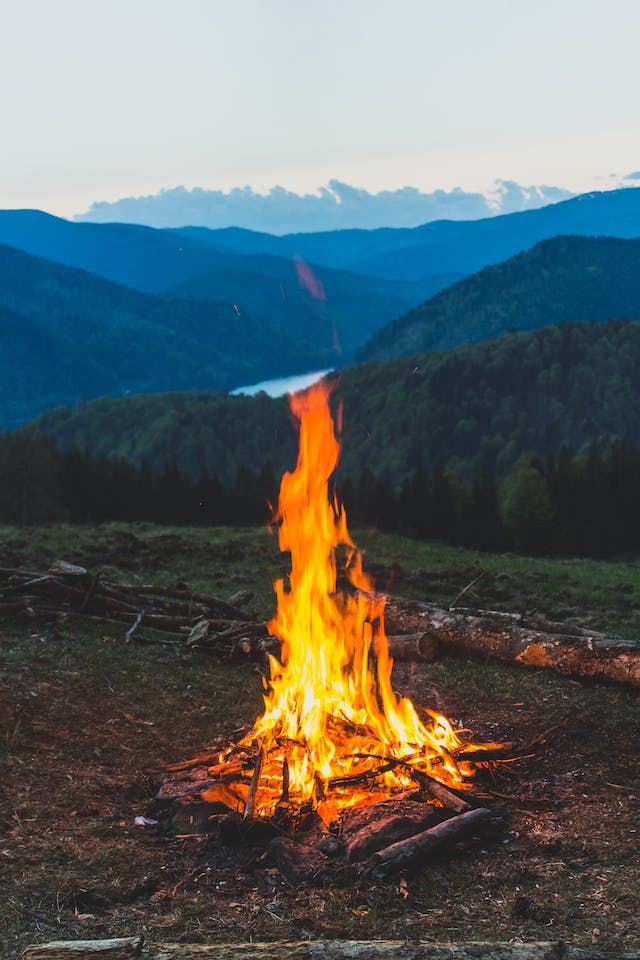Gathering around a crackling campfire under the open sky is a timeless tradition that brings people together, creating lasting memories in the great outdoors. Building a successful campfire begins with the right tools and materials to ignite the flames. In this guide on 3 key ways on how to make a campfire, we’ll explore essential items to use when starting a campfire, ensuring a warm and cozy atmosphere for your outdoor adventures.
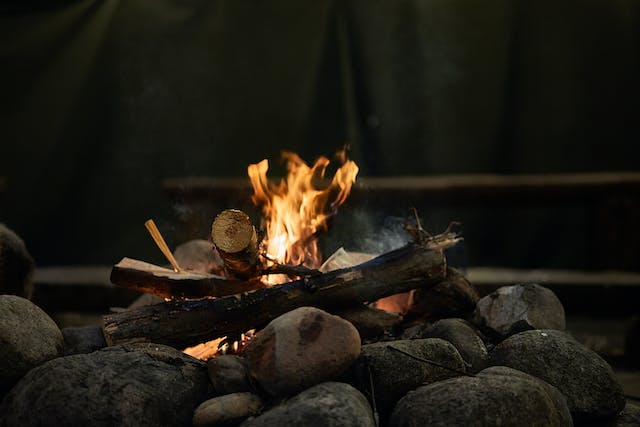
Table of Contents
1. Tinder: The Spark of Ignition
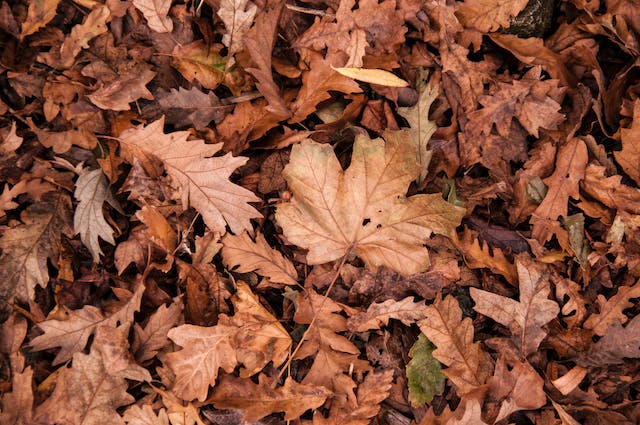
Tinder is the initial fuel that catches fire easily and starts the combustion process. It’s essential to choose materials that are dry, fluffy, and highly flammable. Common tinder options include:
- Dry leaves and grass: Collect dead, dry leaves and grass in abundance. These materials ignite quickly and help transfer the flame to larger fuel sources.
- Birch bark: The thin, papery bark of birch trees is a fantastic natural fire starter. It contains oils that ignite easily, providing a reliable source of tinder.
- Pine Needles: Gather dry pine needles and put in a pile than light it they burn really good.
- Dryer Lint: If you are in your backyard or have access to a dryer, the lint you get from the dryer filter works great to start fires.
- Commercial fire starters: Compact and convenient, commercial fire starters often come in the form of small squares or sticks treated with flammable substances. They’re reliable in various weather conditions.
2. Kindling: Nurturing the Flame
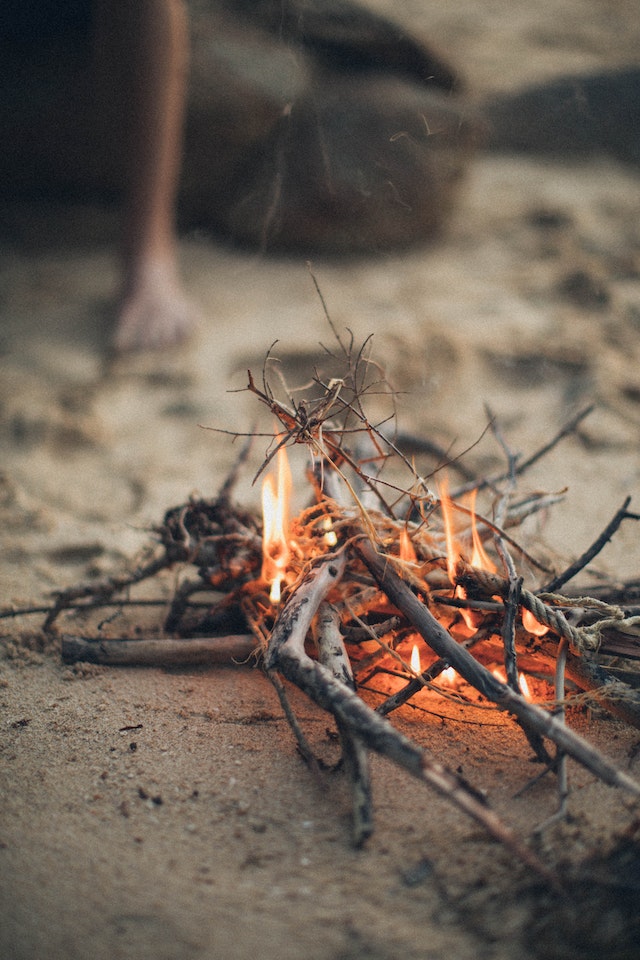
Once the tinder is ablaze, kindling is the next layer of fuel needed to sustain the fire. Kindling consists of small twigs, branches, or wood shavings that catch fire quickly and support the transition to larger fuel. Consider the following for effective kindling:
- Small twigs and branches: Break or cut small, dry twigs and branches into pieces ranging from pencil to finger thickness. Arrange them in a teepee or log cabin formation around the tinder.
- Wood shavings: Create fine wood shavings using a knife or a dedicated tool. These shavings ignite easily and are particularly useful when starting a fire with damp wood.
- Cardboard: Break down small pieces of cardboard packaging to use as kindling. Cardboard burns quickly and helps establish a solid base for the fire.
3. Fuelwood: Building a Sustainable Fire
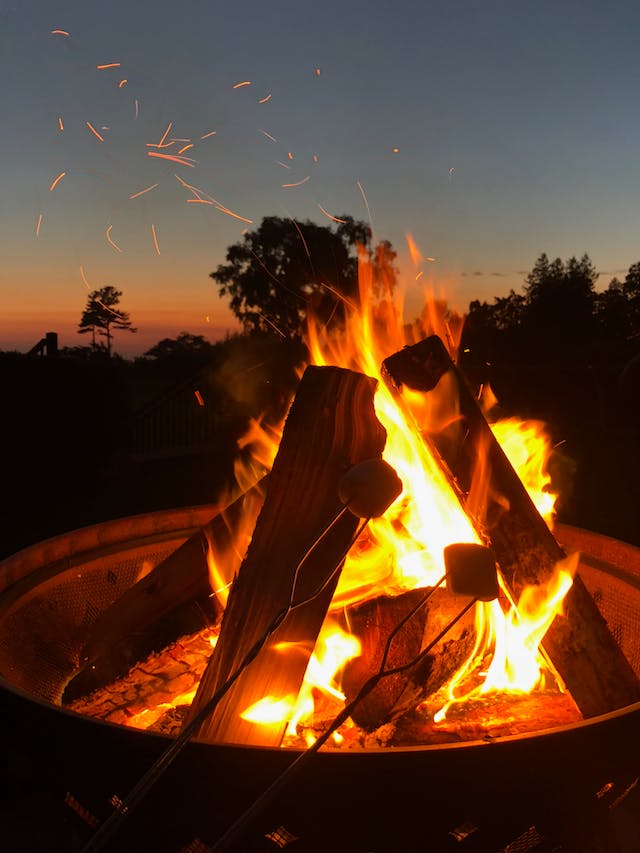
As the flames grow, it’s time to introduce larger fuelwood to sustain and elevate the fire. Selecting the right type of wood is crucial for a long-lasting and enjoyable campfire experience:
- Hardwood logs: Woods like oak, maple, and hickory burn slower and produce hotter, longer-lasting flames. They’re excellent choices for providing sustained heat and a beautiful glow.
- Softwood logs: Pine, spruce, and fir are softer woods that ignite quickly but burn faster than hardwoods. Use softwood logs to keep the fire going as needed.
- Pre-cut firewood: To save time and effort, consider bringing pre-cut firewood to the campsite. Many outdoor stores sell bundled firewood, providing a convenient solution for campers.
Conclusion:
Starting a campfire is an art that requires the right materials and a thoughtful approach. By incorporating tinder, kindling, and fuelwood into your setup, you’ll be well on your way to creating a warm and inviting fire for your outdoor adventures. Remember to prioritize safety, adhere to Leave No Trace principles, and enjoy the mesmerizing beauty of a well-crafted campfire with friends and family. Happy camping!
Affiliate Disclaimer:
This website may contain affiliate links, which means that we may earn a commission if you click on a link and make a purchase. However, the inclusion of affiliate links does not influence the content, recommendations, or reviews provided on this site. Our primary goal is to offer valuable information and resources to our readers.

